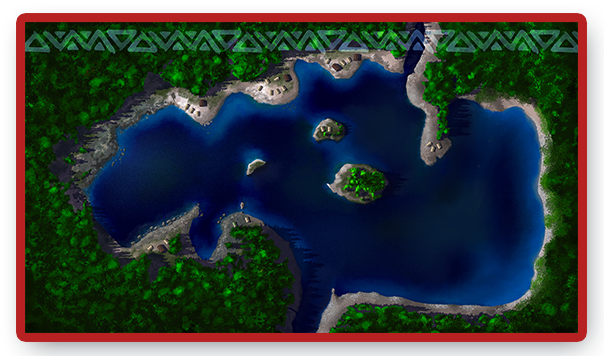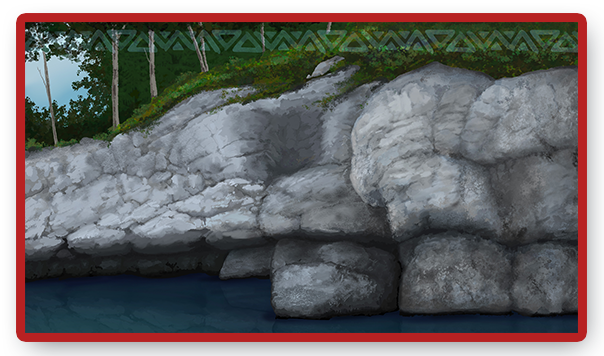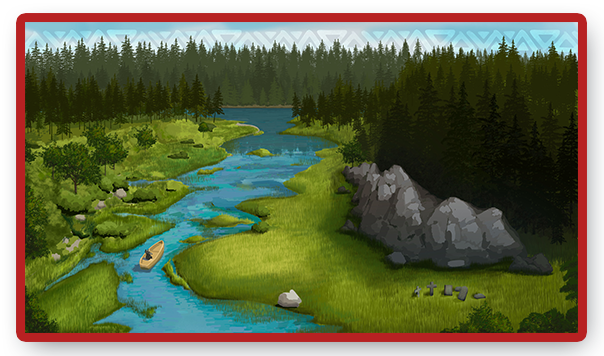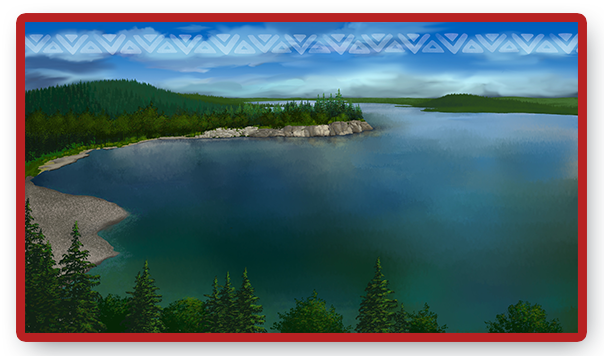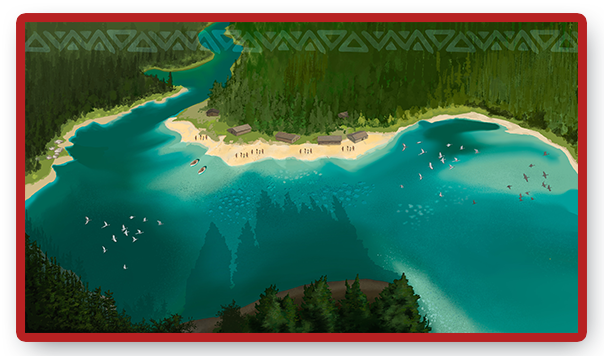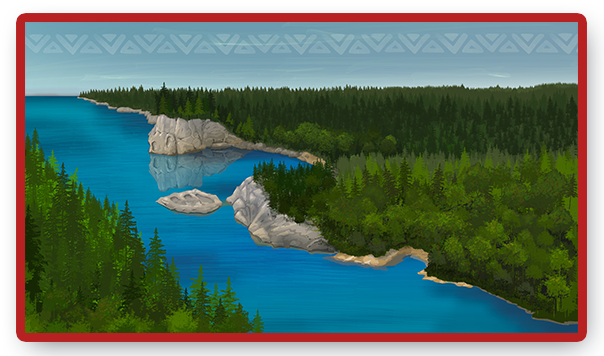
The overall theme of the Community Portal is “Reconciling the Past to Build the Future.”
The purpose of this Community Portal is to help the Nelson House community reconcile to the damage of their historical landscapes by providing all community members, but especially the youth that were not able to experience the environment prior to 1977, a sense of what the environment was like before the flood by the Churchill River Diversion Project.
This portal recreates certain key areas in the Traditional Territory with the hope that being able to encounter the historical landscapes will help transmit the oral traditions and re-affirm the identify of the local community members. The overall message is that there is hope for the future, the environment is starting to overcome the damaging flood, but to genuinely appreciate this recovery, community members need to recognize and reconcile with what was lost.
Elder Reflection
NCN Elders share stories of what life was like before the flood and look to the future as the earth repairs itself from the damages done to our community as a result of the flooding.
Rocky Cree Gathering
The Rocky Cree communities represent communities in Northern MB most impacted by the floods of 1977 when MB Hydro built several dams along the Nelson and Churchill rivers. The impact and its fallout have had long-term implications for the community as a whole but are, today, being addressed in small measures focusing on the youth of tomorrow, creating greater awareness of the cultural and historical significance of the Rocky Cree people and reinvigorating pride as a result.
Six Seasons of the Asiniskow Ithiniwak Project
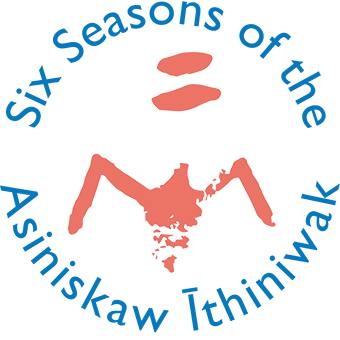
The overall goal of this SSHRC Partnership project is to support the ongoing work of reclaiming Indigenous languages, histories, and knowledges among the Asiniskaw Īthiniwak (Rocky Cree), work that is taking place now in the context of the calls to action by the Truth and Reconciliation Commission of Canada (2015) for, among many other things, the revitalization of Indigenous cultures, the “relearning of Canada’s national history,” and the reconciliation between Indigenous and non-Indigenous people.
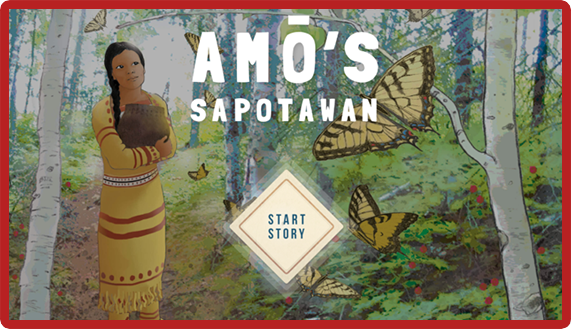
At the heart of the Six Seasons of the Asiniskow Ithiniwak project is the development of a cycle of historical picture books set during the proto-contact period of the mid-1600s, a series of digital picture book apps that invite players to actively engage the Rocky Cree world, curriculum guides to support the use of both books and apps in classrooms, and museum and travelling exhibits to extend the audience for the stories.
The creation of the stories is rooted in archaeological field and collections research, as well as in historical research in archives and the documentation of oral histories held by Rocky Cree knowledge keepers. As this description suggests, a core value of the project is respect for historical and cultural accuracy. A key objective is the communication of historically and culturally accurate material to young people both within and beyond school classrooms.
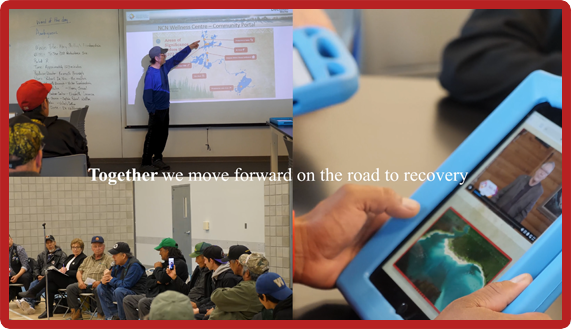
The project also seeks to document, analyze, and assess the methods of collaborative, participatory, and community-based research used by project researchers and to mobilize the results of this meta-analysis for the purpose of advancing public policy and programming for reconciliation.
Downloads and Links
- Six Seasons Project
Six Seasons of the Asiniskaw Īthiniwak Website - Amō’s Sapotawan
Amō’s Sapotawan is the second book in the Six Seasons series written by Rocky Cree storyteller William Dumas and illustrated by Rhian Brynjolson. The book follows Amō, a Rocky Cree girl, as she decides what path to choose for her life. The book teaches readers about Rocky Cree culture in the 1600s. Set in the season of nīpin, summer, it has a focus on traditional pottery and fishing techniques among many other things. You can buy a copy of the book here: Portage and Main Press website- AMO App
You can now download our new picture book app AMO, the app version of Amō’s Sapotawan in the App Store on iOS and the Play Store on Android. The app features several interactive games, narration in Cree and in English, as well as an engaging soundscape. - AMO Teacher’s Guide
The Teacher’s Guide is now available to download for free: download Teacher’s Guide.
The Teacher’s Guide is intended to support educators using Amō’s Sapotawan and the AMO app in the classroom. It presents four thematic modules that include teaching strategies with suggested connections to Manitoba middle years curricula in Social Studies, Science, English Language Arts, Health, and the Arts as well as Rocky Cree culture and language.
- AMO App
- The Gift of the Little People
William Dumas’s The Gift of the Little People (beautifully illustrated by Rhian Brynjolson) is now available in bookstores and online. The book tells the story of a sickness that new visitors in mistiwāsahak brought into a Rocky Cree community and of hope that comes in form of a gift from the Little People. You can buy a copy of the book here: Portage and Main Press website - Pīsim Finds Her Miskanaw
In May 2020, the revised edition of Book One in the Six Seasons Series, Pīsim Finds Her Miskanaw was published. The revised edition features new maps, updated Cree spellings, and an expanded glossary. You can buy a copy of the book here: Portage and Main Press website.- PISIM App
Our first app in the Six Seasons series, PISIM, can also be downloaded for both iOS and Android devices. You can find PISIM in the App Store and in the Play Store.
- PISIM App
- Six Seasons Social Media
Like and follow the Six Seasons project on Facebook, Twitter, and Instagram.
Future Phases of the Portal
In subsequent development phases of this portal, we hope it will become a repository for essential learning about the community’s culture, history, traditions, and language. It will deliver a clear sense that it is of immense importance to learn from the past, but not live in the past. The purpose of these sections will be to pass on the essential knowledge from the elders and help prepare the next generation to take over and keep alive the traditions and community identity.


